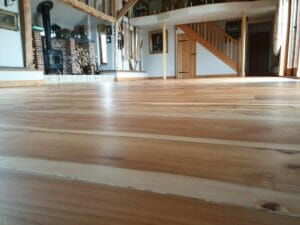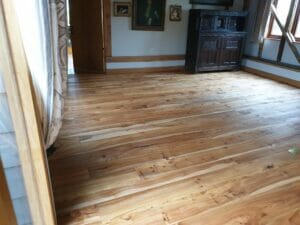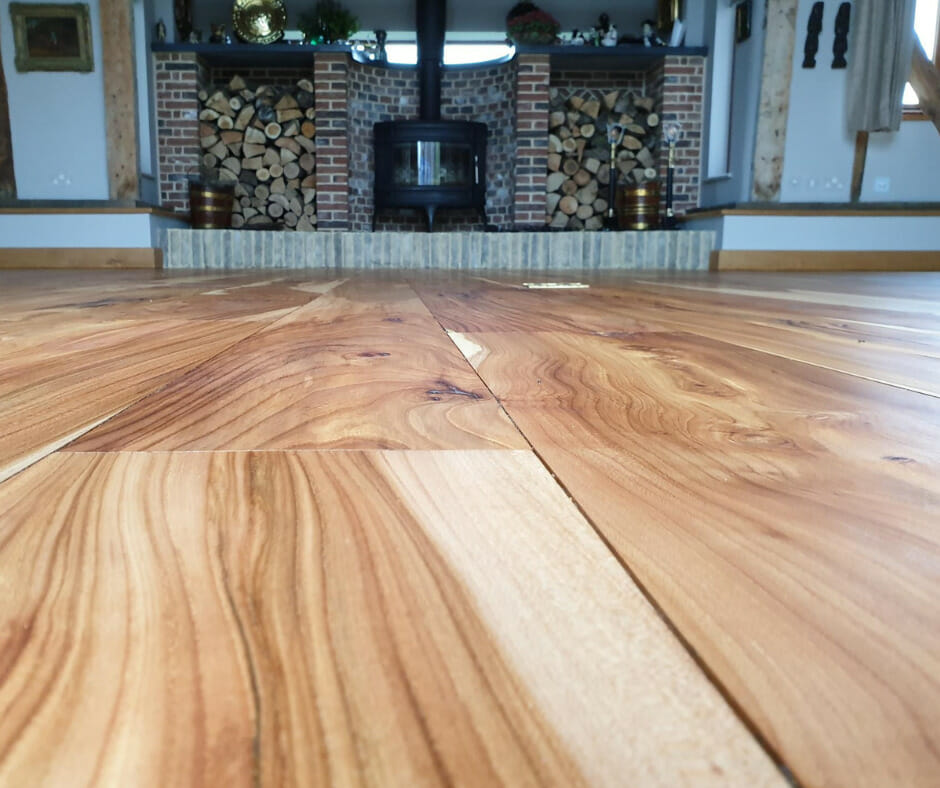Elm trees were once widespread throughout Europe and England… Unfortunately, they were devastated by Dutch Elm Disease, a fungal disease that first appeared in the Netherlands in the 1920s and quickly spread throughout Europe.
Before elm wood became rare, it had a rich history and had various purposes throughout the centuries. This was due to its strength, durability, and resistance to water… They often used elm wood for shipbuilding in the Middle Ages and made wagon wheels, tool handles, and furniture.
What made elm wood a rare material:
Bark beetles spread the disease. Once it infects a tree, it quickly kills it. By the 1970s, the disease had killed millions of elm trees throughout Europe. This included many majestic mature trees lined streets and country lanes. As a result, elm wood became scarce, and it became more common to use other woods, such as oak and ash, for furniture and construction.
In England, the impact of Dutch Elm Disease was particularly severe. Before the disease outbreak, elm trees were a common sight throughout the English countryside… many towns and villages had streets lined with mature elm trees. However, by the 1980s, more than 25 million elm trees had been killed by the disease… and it transformed the landscape. Today, it is rare to find a mature elm tree in England, and elm wood is no longer as widely available as it once was.
Can you do anything to get rid of the disease?
In recent years, many have tried to develop disease-resistant varieties of elm trees, and they made some progress. However, it is likely many years before mature elm trees are once again a common sight in the English countryside. In the meantime, elm wood remains a highly prized and sought-after material, appreciated for its beauty, durability, and historical significance.
Can you restore your rare elm wood floor?
Yes, you can restore your elm wood floor… Elm wood floors have been popular for centuries, prized for their unique grain patterns and durability. However, elm wood floors can become worn and damaged over time, requiring restoration to bring them back to their former glory.
Art of Clean was honoured to be trusted with restoring this stunning elm wood floor:
The below images don’t do the elm wood floor justice… but I think you’ll agree it adds a little charm to the room with its different textures.



How do you restore your elm wood floor?
-
Step 1:
The first step in restoring elm wood floors is to assess the damage. This involves inspecting the floor for any dents, scratches, or other types of damage. Once you have identified the damage, the restoration process can begin.
-
Step 2:
The next step is to sand your floor to remove any surface imperfections. You do this using a floor sander, which you can rent can from most hardware stores. It’s essential to start with a coarse grit sandpaper and gradually work up to a finer grit, to avoid removing too much of the wood’s surface.
-
Step 3:
After sanding, thoroughly clean the floor to remove any dust and debris. You can do this using a vacuum cleaner and then wiping the floor with a damp cloth. Once the floor is clean, it’s time to apply a new finish.
-
Step 4:
You can apply several different types of finishes to elm wood floors, including oil-based, water-based, and polyurethane. Each type of finish has pros and cons, so choosing the right one for your specific needs is essential.
Oil-based finishes are more durable but take longer to dry and have a stronger odour.
Water-based finishes dry faster and have less odour but might not be as strong as oil-based finishes.
Polyurethane finishes offer the best of both worlds, providing a durable and long-lasting finish without the strong odour of oil-based finishes.
Once you have applied the finish, it’s essential to let it dry completely before allowing anyone to walk on the floor. Drying your elm floor will usually take 24-48 hours, depending on the type of finish used. After the finish has dried, it’s time to enjoy your newly restored elm wood floor!
How to keep your elm floor looking good after restoration:
If you want to keep your elm wood floor looking its best, it’s essential to maintain it properly. Maintaining your elm wood floor includes regularly cleaning it with a vacuum cleaner or soft broom to remove dirt and debris… wiping up spills immediately to prevent staining, and using protective pads under furniture legs to avoid scratches. It’s a good idea to have the floor professionally re-finished every few years to maintain its beauty and durability.
Check out this blog about why you should maintain your elm wood floor:
So, as you can see… restoring elm wood floors can be a rewarding process that brings back the natural beauty of this timeless material. Following these steps and properly maintaining the floor, you can enjoy your restored elm wood floor for years.
If you would like to find a wood floor sanding company near you, click on the link below:
 Written by Tracey Gilbey, Marketing and Admin Coordinator at Art of Clean.
Written by Tracey Gilbey, Marketing and Admin Coordinator at Art of Clean.
For further advice or information on our Carpet and Soft Furnishing care, please do not hesitate to contact the Art of Clean team on 01223 901551 in Cambridge. Our services include Carpet Cleaning, Upholstery Cleaning, oriental and area Rug Cleaning, Curtain Cleaning, Patio, and Driveway Pressure washing, Leather Cleaning, Stone and Tile Floor Cleaning, and Wood Floor Sanding and Restoration. We also supply new flooring and carpets through our sister company Art of Flooring. Farthings Cambridge provides our Dry-Cleaning service

